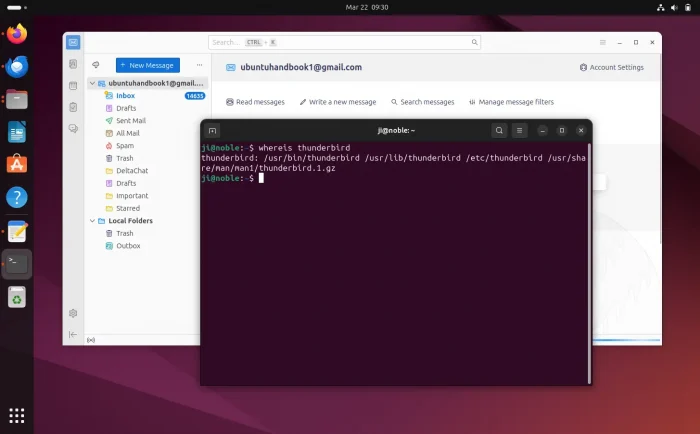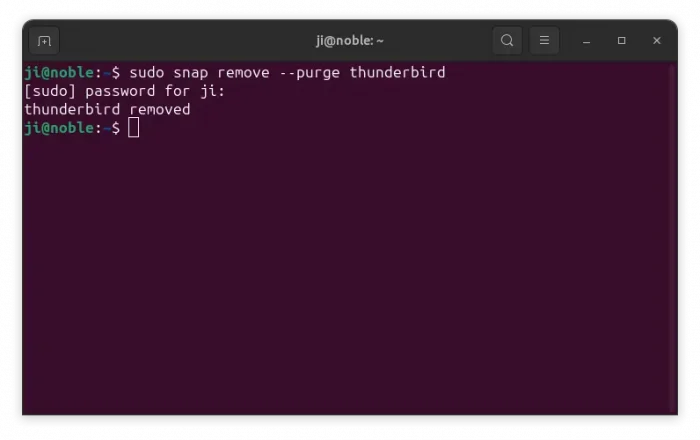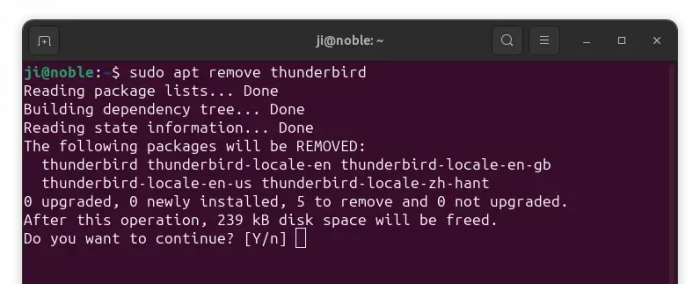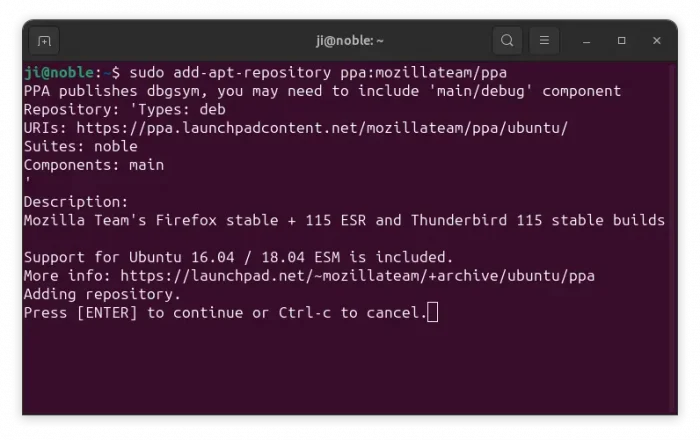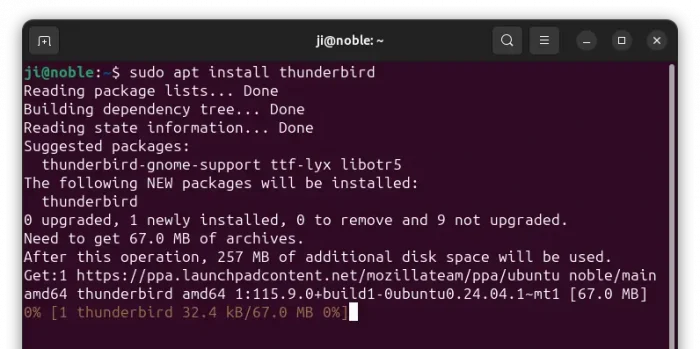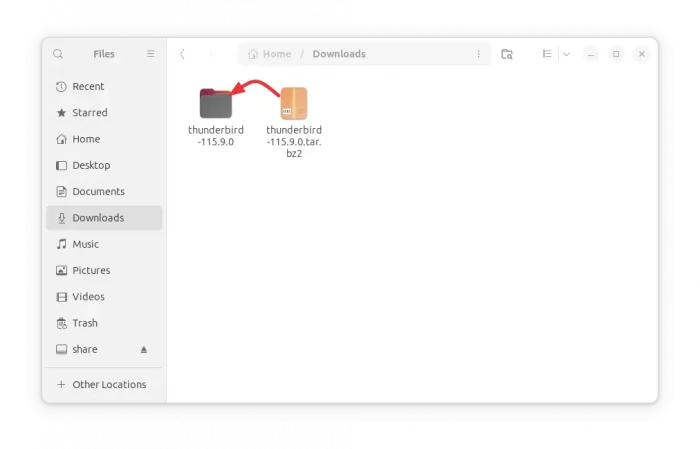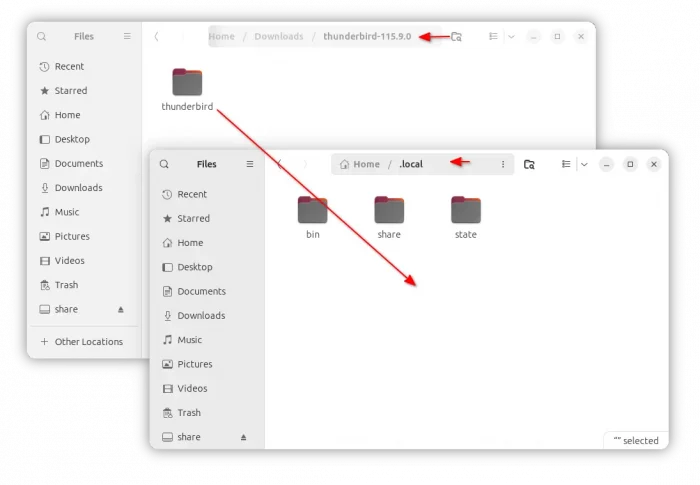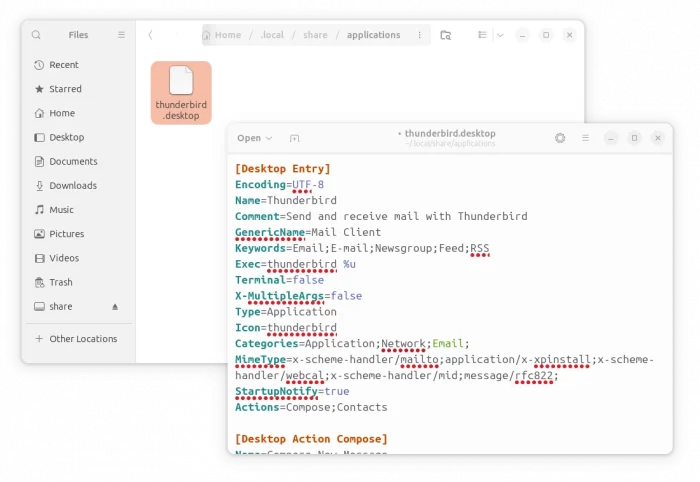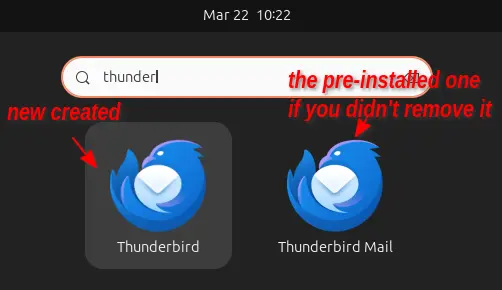How to Install Thunderbird as DEB (Not Snap) in Ubuntu 24.04
For Thunderbird users who don’t like Snap package, here’s step by step guide shows how to replace the pre-installed snap version of the mail client with classic Deb package in Ubuntu 24.04 LTS.
Like Firefox, the Thunderbird Email Client in Ubuntu 24.04 has been replaced as Snap package that runs in sandbox! If you don’t like the change, then here are 2 other choices:
- Mozilla Team PPA
- Mozilla’s official Linux Tarball.
Step 1: Remove the pre-installed Snap Package
NOTE: Please backup your important data before uninstalling the Thunderbird package.
It’s OK to keep the Thunderbird Snap package, but after installing the DEB version there will be duplicated app icons in start menu.
To uninstall the Snap package, press Ctrl+Alt+T to open terminal and run command:
sudo snap remove --purge thunderbird
Also, run command to remove the empty .deb package, which is a wrapper that redirects to the Snap package:
sudo apt remove thunderbird
Step 2: Install Thunderbird as DEB package
The Ubuntu Team members have been maintaining the “Mozilla Team” PPA for many years. The PPA contains the latest Thunderbird Stable, Firefox ESR, and Firefox stable as .deb packages.
The PPA is “official” but maintained by Ubuntu Team. So far, it supports Ubuntu 24.04, Ubuntu 23.10, Ubuntu 22.04, Ubuntu 20.04, and old Ubuntu 18.04/16.04 ESM.
1. First, press Ctrl+Alt+T on keyboard to open terminal. When it opens, run command to add the PPA:
sudo add-apt-repository ppa:mozillateam/ppa
Type user password (no asterisk feedback, so just type in mind) when it asks and hit Enter to continue.
2.For old Ubuntu 16.04, and some Ubuntu based systems, you may need to manually refresh package cache after adding PPA:
sudo apt update
3. The Thunderbird DEB package in system repository is at version 1:115.8.1+build1+snap2 at the moment, which is older than the one in PPA. So, just run apt install command to install the .deb package from PPA without worrying about the priority.
sudo apt install thunderbird
If you everything goes well, it should output that’s getting package from ppa.launchpadcontent.net
Optional: Install Thunderbird from official Linux tarball
The PPA is the best choice for those who hate running the mail client in sandbox, IMO! Just for choice, user can choose the portable tarball offered by Mozilla.
1. First, click download the Linux tarball from Thunderbird website:
2. Then, open file manager, navigate to Downloads folder, and extract the Thunderbird tarball.
This is a portable package with no installation required. Just navigate to extracted folder, and double-click the “thunberbird” or “thunderbird-bin” file should launch the email client.
3. If you like the portable package, then you may move it to another location for long time use. And, then create a desktop entry for it, so you can launch it like other apps from start menu (or app grid).
In my case, I moved the “thunderbird” sub-folder into user’s .local folder (press Ctrl+H to view/hide the folder).
4. After last step, run the command below to create a soft link for the executable file to “.local/bin“. So your system know where to find the executable file. (NOTE: You can SKIP this step, instead add full PATH to file in next step 5).
ln -s ~/.local/thunderbird/thunderbird ~/.local/bin/thunderbird
Replace ~/.local/thunderbird if you moved the source folder to another directory.
Also, do the soft link for the app icon file:
mkdir -p ~/.local/share/icons
ln -s ~/.local/thunderbird/chrome/icons/default/default128.png ~/.local/share/icons/thunderbird.png
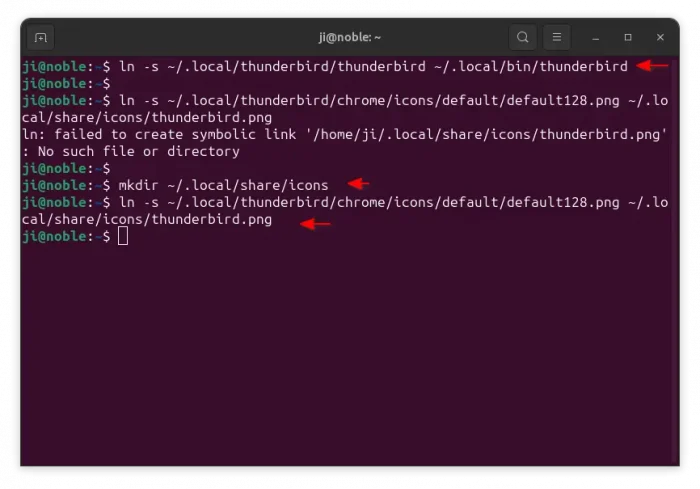
5. Finally, open “Files” and navigate to .local/share/applications (press Ctrl+H to view .local folder). In that folder, create an empty document and name to thunderbird.desktop and click editing it.
GNOME Desktop does not have graphical option to create new document out-of-the-box. Instead, you may launch “text editor” and save file to “.local/share/applications” after editing (through “Save as” dialog).
When file opens, paste following lines and save it.
[Desktop Entry] Encoding=UTF-8 Name=Thunderbird Comment=Send and receive mail with Thunderbird GenericName=Mail Client Keywords=Email;E-mail;Newsgroup;Feed;RSS Exec=thunderbird %u Terminal=false X-MultipleArgs=false Type=Application Icon=thunderbird Categories=Application;Network;Email; MimeType=x-scheme-handler/mailto;application/x-xpinstall;x-scheme-handler/webcal;x-scheme-handler/mid;message/rfc822; StartupNotify=true Actions=Compose;Contacts [Desktop Action Compose] Name=Compose New Message Exec=thunderbird -compose OnlyShowIn=Messaging Menu;Unity; [Desktop Action Contacts] Name=Contacts Exec=thunderbird -addressbook OnlyShowIn=Messaging Menu;Unity;
NOTE: If you SKIPPED step 4, then you have to replace thunderbird in lines of “EXEC” with full path to the executable file (/home/YOUR_USER_NAME/.local/thunderbird/thunderbird according to step 3).
Also, replace thunderbird in line of “Icon” with full path to the icon file (/home/YOUR_USER_NAME/.local/thunderbird/chrome/icons/default/default128.png).
If everything’s done properly, you’ll see the new thunderbird icon in the start menu (or app grid).
How to Restore
To uninstall the Thunderbird package installed from PPA, open terminal (Ctrl+Alt+T) and run command:
sudo apt remove --autoremove thunderbird
And, remove the Mozilla Team PPA by running command:
sudo add-apt-repository --remove ppa:mozillateam/ppa
To uninstall the portable tarball package, just run command to delete the corresponding files:
rm -R ~/.local/thunderbird
rm ~/.local/bin/thunderbird ~/.local/share/icons/thunderbird.png ~/.local/share/applications/thunderbird.desktop
If you want to install back the stock Thunderbird Snap package, either use App Center or run commands:
- First, update system package cache just in case:
sudo apt update
- Install the .deb package (after remove PPA) from system repository, which automatically redirect to the snap package:
sudo apt install thunderbird
Source: UbuntuHandbook

